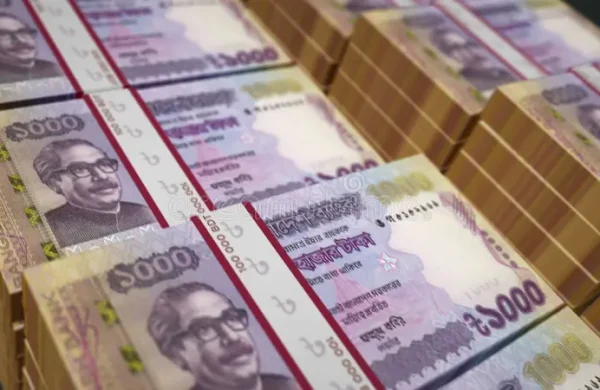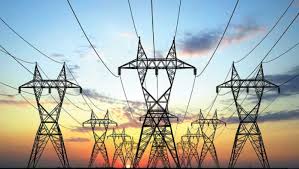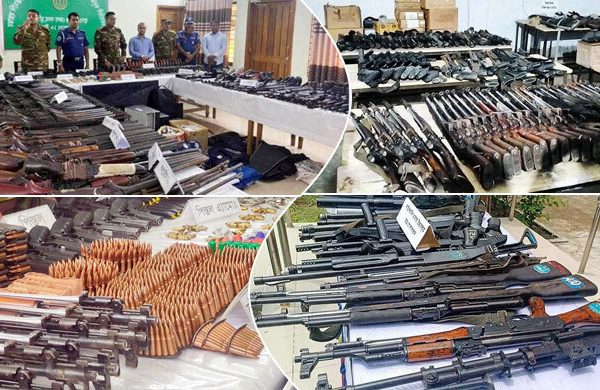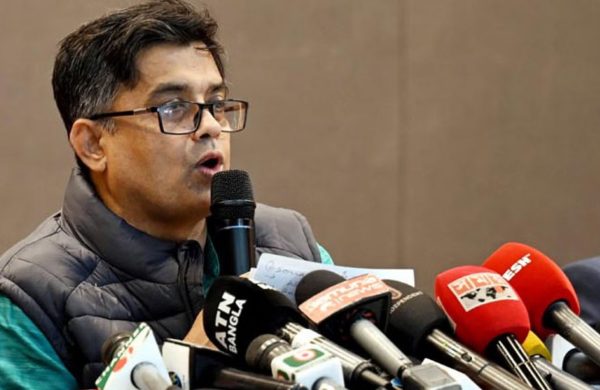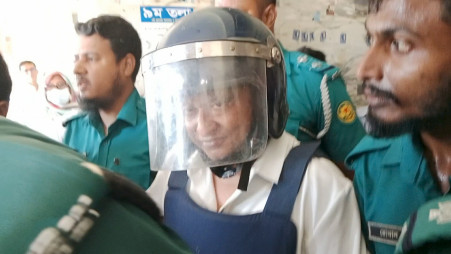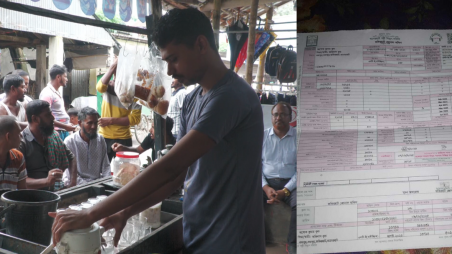How flawed policy keeps shutting gas-fired power plants amid fuel shortage
- Update Time : Saturday, August 23, 2025
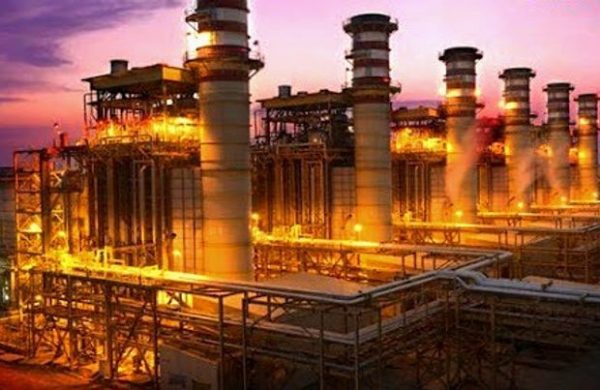
TDS Desk:
Policy backfires. These two words perfectly sum up Bangladesh’s gas-based power strategy.
For two decades, the country has grappled with a widening gas shortage, even after importing LNG. Yet, the previous government kept approving gas-fired power plants without securing fuel.
The result is costly capacity payments for idle plants while the state misses out on cheaper electricity.
The latest victim is Jera’s 718MW plant in Meghnaghat. It began commercial operation on 28 July but had to shut down in less than two weeks because Petrobangla could not supply the 130mmcfd of gas needed to run it.
And more trouble is brewing.
Four more large gas-fired plants, totalling 1,955MW, are expected online within 18 months. Together, they will demand an extra 615mmcfd, a figure power division officials admit is nearly impossible to manage given the current supply crunch.
Power Division Secretary Farzana Mamtaz put it bluntly: “Power plants like Rupsha, Jera and others were not built in a planned manner without ensuring gas supply.”
“Those power plants are actually a pain for us,” she told The Business Standard.
The problem is not only scarcity but also logistics.
Energy Adviser Muhammad Fouzul Kabir Khan explained Jera’s rapid shutdown: “Several gas-fired plants operate in Meghnaghat. We face both a gas shortage and distribution-line constraints. Jera had no option but to shut down.”
Bangladesh Power Development Board (BPDB) Chairman Md Rezaul Karim said they will compare the costs of upcoming plants with existing coal and liquid-fuel plants.
“We are considering how to supply gas to plants, but it will take time,” he also said.
Natural gas remains Bangladesh’s most cost-effective power source – Tk6–8 per unit, versus Tk12–15 for coal and Tk25–27 for liquid fuel.
Yet the irony is stark: the cheapest source is also the most unreliable.
CONDITIONAL NOD FOR JERA
The government allowed Jera to declare its Commercial Operation Date (COD) on condition that it agreed to a substantial tariff reduction. However, Jera refused, arguing that any readjustment required approval from its financiers.
Energy Adviser Fouzul Kabir Khan said, “We gave COD to JERA on the condition of lowering the tariff significantly. Otherwise, it would only receive enough gas to keep the plant technically running. That is why the plant was damaged.”
He also confirmed that no capacity payment would be made, as the agreement contained multiple conditions that had not been fulfilled.
Under the 2019 power purchase agreement, BPDB committed to buying electricity from the 718MW plant for 22 years at a levelised tariff of Tk5.85 per kilowatt-hour. However, currency depreciation could increase that figure by around 25%.
Regarding why the Jera plant was allowed to start operations despite the fuel not being secured, Secretary Farzana Mamtaz told journalist that under the power purchase agreement, the plant owner can issue the COD themselves after meeting certain conditions, even if the government has not issued it.
To inquire about the plant’s shutdown amid the gas crisis and the Power Division’s push for tariff renegotiation, Jera acquired the Meghnaghat power plant from India’s Reliance Power in 2019. Following the acquisition, the project company was renamed Jera Meghnaghat Power Limited (JMPL) on 9 October 2024.
STATUS OF PLANTS IN PIPELINE
BPDB data shows more projects are on the horizon. Ghorashal’s repowering Unit-4, with 409MW capacity, is due by December 2025 and will require 275mmcfd of gas. Unit-3, a 156MW project, is scheduled for June 2026 and will need 100mmcfd. Both are nearly complete.
North-West Power Generation Company’s 800MW Rupsha LNG-fired plant is scheduled for January 2027. The contract was signed in 2019, and construction has progressed around 75% so far.
Another LNG-fired plant, a 590MW combined-cycle project in Anwara, Chattogram, is owned by United-Chattogram Power. Scheduled for commercial operation in January 2027, the contract was signed on 28 October 2021, and construction is 66% complete.
Regarding the Rupsha plant, Adviser Fouzul Kabir said, “We have decided to issue the COD so the plant receives gas solely for internal consumption, keeping it technically operational. Otherwise, it risks becoming inoperable.”
STATE OF EXISTING PLANTS
Bangladesh has 51 gas-fired power plants with a combined capacity of 11,504MW, demanding 2,420mmcfd of gas but receiving only 850–1,050mmcfd, and accounting for 43% of the total 26,955MW generation capacity.
Out of the 51 plants, only 32 remain operational.
There are 21 gas-fired power plants under Titas Gas Transmission and Distribution Company with a total gas requirement of 996mmcfd, yet average supply hovers at just 300–320mmcfd.
Of these, 13 plants with a combined capacity of 3,306MW remain completely shut due to gas shortages, and none are operating at full capacity.
Under Bakhrabad Gas Distribution Company Limited (BGDCL), 15 gas-fired plants with a total capacity of 2,755MW require 423.9mmcfd of gas but receive only 189.8mmcfd.
The situation is more severe for Karnaphuli Gas Distribution Company Limited (KGDCL), where supply is just 45.3mmcfd against a demand of 185mmcfd.
Power plants under Jalalabad Gas Transmission and Distribution System Limited (JGTDSL) fare slightly better, receiving 269mmcfd against a demand of 395mmcfd. However, eight of its plants, totalling 652MW, have been offline for months.
At Pashchimanchal Gas Company Limited (PGCL), gas shortages have forced four plants, with a combined capacity of 222 MW, out of operation. Sundarban Gas Company Limited (SGCL) faces a demand of 174mmcfd but receives only 98.9mmcfd.
DEMAND HIGHER THAN WHAT PETROBANGLA SAYS
According to Petrobangla, the country’s gas demand on Thursday stood at around 3,800mmcfd, though energy experts often dismiss this figure as unrealistic. On average, Petrobangla supplies 2,500–2,600mmcfd, occasionally reaching 2,800–2,900mmcfd.
Energy expert Ijaz Hossain told journalist at a recent policy dialogue, “Petrobangla’s claim on gas demand is absurd. Actual requirements exceed 4,500mmcfd. Unable to meet the expected demand, Petrobangla reports a suppressed figure.”
Energy Secretary Mohammad Saiful Islam concurred, noting that real gas demand in the country could reach as high as 5,000mmcfd.
IMPACT OF GAS CRISIS ON PLANT FACTOR
The ongoing gas crisis has forced gas-based power plants to operate at reduced plant factors, driving up production costs. In FY24, gas-based plants ran at an average 32% plant factor, with overall generation costing Tk6.30 per unit.
A plant factor is a measure of how much electricity a power plant actually produces compared to its maximum possible output over a period of time.
BPDB data shows that higher plant factors significantly lower production costs. The 383MW Bibiyana (South) plant, for example, ran at 72% plant factor in FY24, producing electricity at Tk3.68 per unit. Similarly, the 400MW Bibiyana-3 operated at 78% plant factor, with a cost of Tk3.49 per unit.
In contrast, underperforming plants faced soaring costs. The 171MW Baghabari plant ran at just 2% plant factor, costing Tk43.36, while the 163MW Chandpur CC plant ran at 5% plant factor, costing Tk 20.04. The 105MW Tongi plant, with zero plant factor, recorded an astronomical Tk1,345.31.
By comparison, in FY23, the average plant factor was 35%, and generation cost was Tk5.13 per unit, highlighting how higher utilisation drives down costs.
Power Division Secretary Farzana Mamtaz noted, “To start commercial operation, plants must have sufficient gas supply and transmission infrastructure. We can’t guarantee gas for all plants at this stage.”
WHAT’S NEXT
When asked if Petrobangla plans to increase gas supply to power plants, AKM Mizanur Rahman, director (finance), said, “We will not increase gas supply to power plants. Our priority is to supply more gas to industry and fertiliser production.”
He added, “BPDB must ration the currently allocated gas. They need to prioritise energy-efficient plants over less efficient ones. Plants that consume more gas but produce less should be phased out.”
On why Petrobangla is not importing more gas to support power generation, Rahman explained, “We face financing and regasification constraints. The FSRU can operate at an average of 85% capacity. For maintenance and natural contingencies, it can’t run at 100% year-round.”



